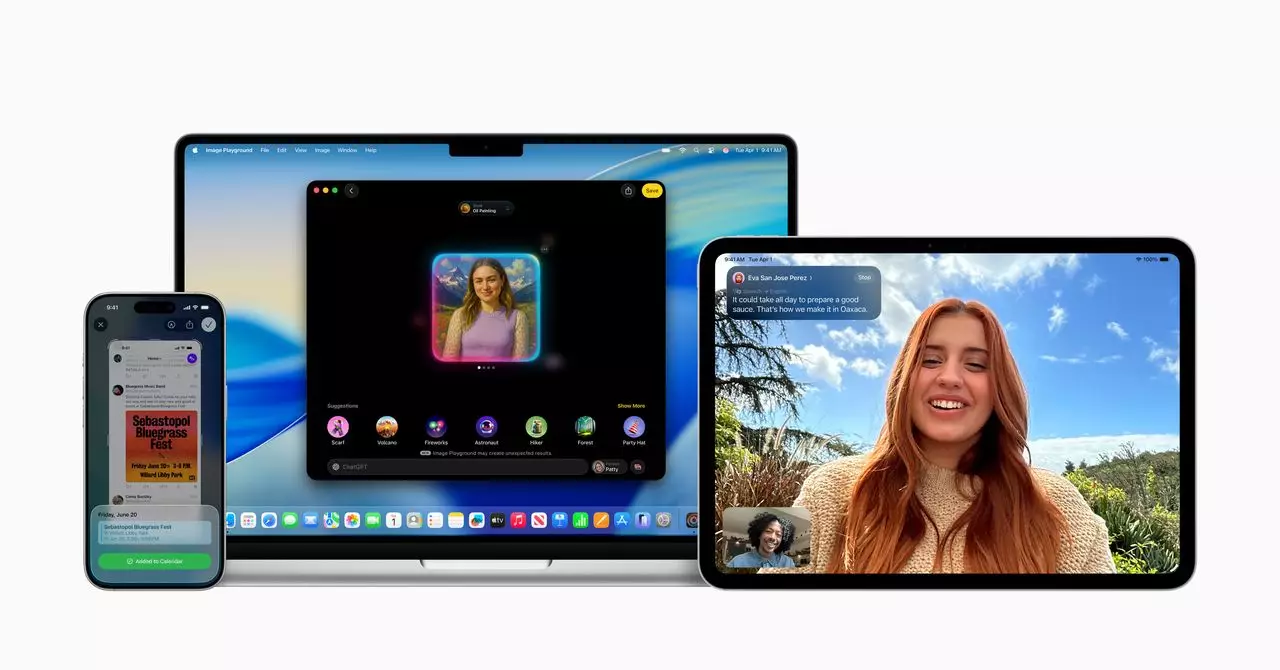Apple’s unveiling of its latest AI initiatives at WWDC was met with interest, demonstrating the company’s deliberate yet cautious integration of artificial intelligence across its product ecosystem. By revealing exciting upgrades for the iPhone, Mac, and Apple Watch, Apple showcased its commitment to enhancing user experience through AI. However, the events highlighted a crucial tension in the tech landscape: while Apple’s slow-and-steady strategy may favor maintaining existing users, it raises questions regarding the company’s ability to keep pace with rivals like Google, Meta, and OpenAI, who are racing toward greater AI capabilities.
One of the standout features introduced was Live Translation, a cutting-edge tool aimed at translating phone and FaceTime conversations in real time—a function that could enhance communication across linguistic barriers significantly. This gesture aligns with Apple’s core philosophy of breaking down obstacles to user interaction. Moreover, the Workout Buddy feature, which functions as an AI-powered personal coach during workouts, adds a welcoming touch to fitness monitoring, fostering motivation and engagement among users. As a testament to Apple’s design ethos, it delivers not just functionality but also an encouraging user experience.
Innovations in Visual Intelligence and Creative Tools
Alongside these features, Apple presented enhancements to its Visual Intelligence platform. This tool’s ability to analyze images and even interpret textual data from screenshots signifies a leap forward in user interface interaction and presents possibilities for a more intelligent photographic experience. The opening of avenues to additional creative tools, such as Genmoji and Image Playground, offers users a playful engagement with AI, allowing for the generation of stylized images in a way that might redefine digital creativity.
However, the nuanced implications of these advancements linger. While the introduction of AI-driven tools contributes to a sophisticated user interface, it becomes critical to consider whether such incremental updates truly innovate or merely polish existing functionalities. Analysts have put forward that Apple’s measured approach to AI might be a strategic shield against potential user discontent—especially among its loyal customer base that values familiarity over abrupt changes.
The Competitive Landscape: Are They Keeping Up?
Despite the excitement surrounding its new offerings, there’s a prevailing sentiment that Apple is in a reactive position when compared to the highly accelerated advancements made by its competitors. Observers noted that some of Apple’s AI tools still lean on capabilities that require third-party AI models for complex queries, thereby muting the company’s narrative of innovation.
Francisco Jeronimo from IDC emphasized the importance of opening up Apple’s AI framework to developers, recognizing that this move positions Apple closer to competing with established players in the AI space. The prospect of integrating cloud models with the commitment to user privacy further enhances Apple’s appeal in a market increasingly concerned with data security. Nonetheless, as other tech giants explore next-gen applications of AI—like real-time interaction with smart cameras—Apple’s trajectory must consider more than just feature introductions; it should examine the broader implications of AI in personal computing.
The Path Ahead: Potential and Responsibility
While Apple’s incremental AI updates appear consciously designed to avoid overwhelming its user base, analysts caution that the company must navigate a precarious tightrope. As the industry evolves, user expectations for seamless AI integration will rise, prompting Apple to innovate more boldly. Currently, the challenge lies in transitioning from minor upgrades to groundbreaking applications that not only retain existing users but also expand Apple’s market share.
Ultimately, Apple must harness its vast resources to explore transformative AI solutions that resonate with both new and existing users. The company’s future in the AI landscape may very well hinge on embracing a more aggressive stance, one that aligns innovation with a sense of responsibility. The time for awakening this potential is now, and how Apple responds will shape its legacy in the ever-competitive realm of technology.

